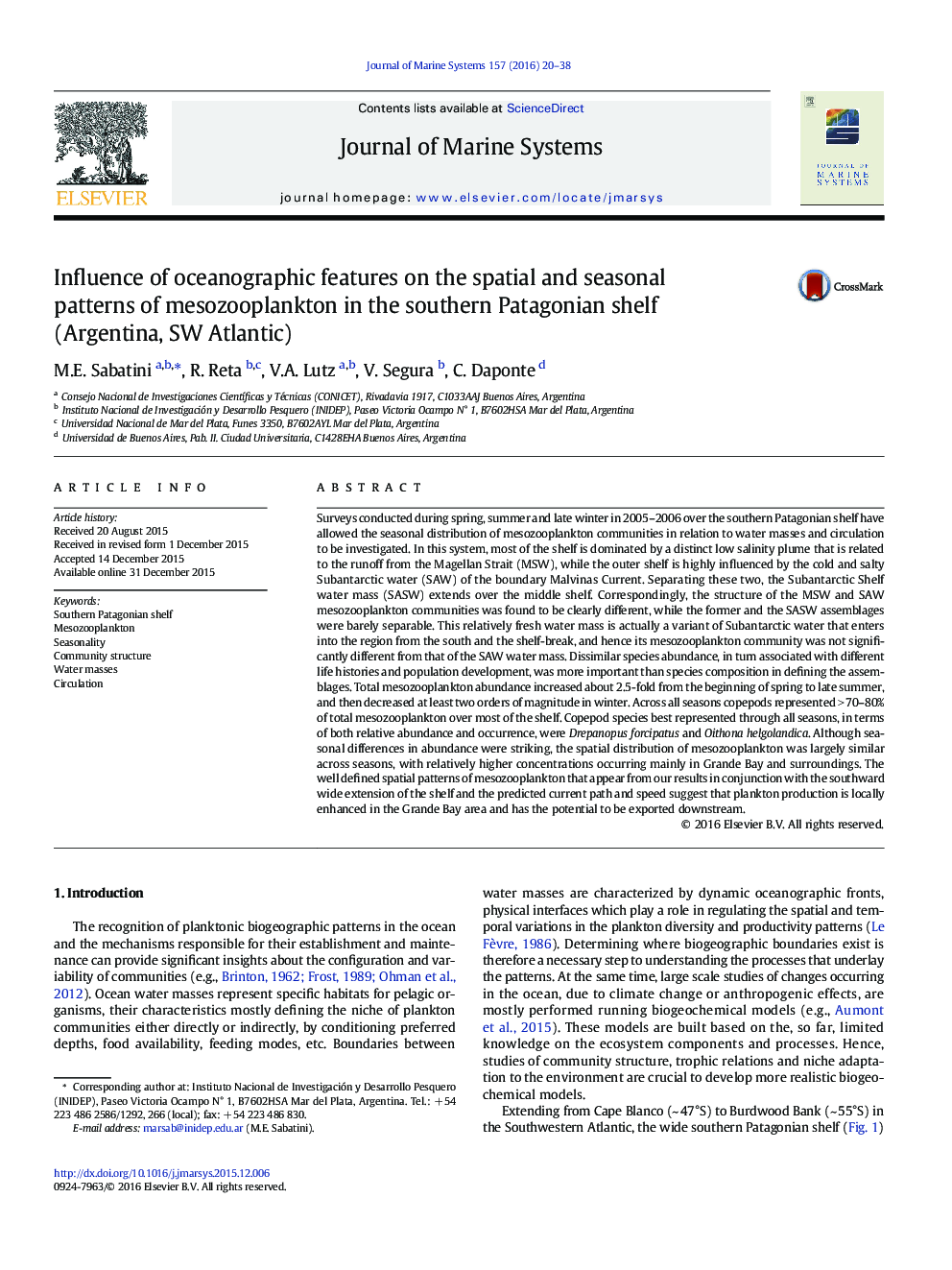| Article ID | Journal | Published Year | Pages | File Type |
|---|---|---|---|---|
| 4547922 | Journal of Marine Systems | 2016 | 19 Pages |
•Water masses in the southern Patagonian shelf encompass typical mesozooplankton assemblages that extend across seasons.•Dissimilar species abundance is more important than species composition in defining the assemblages.•Highest abundances are likely related to weak currents and enhancement processes.
Surveys conducted during spring, summer and late winter in 2005–2006 over the southern Patagonian shelf have allowed the seasonal distribution of mesozooplankton communities in relation to water masses and circulation to be investigated. In this system, most of the shelf is dominated by a distinct low salinity plume that is related to the runoff from the Magellan Strait (MSW), while the outer shelf is highly influenced by the cold and salty Subantarctic water (SAW) of the boundary Malvinas Current. Separating these two, the Subantarctic Shelf water mass (SASW) extends over the middle shelf. Correspondingly, the structure of the MSW and SAW mesozooplankton communities was found to be clearly different, while the former and the SASW assemblages were barely separable. This relatively fresh water mass is actually a variant of Subantarctic water that enters into the region from the south and the shelf-break, and hence its mesozooplankton community was not significantly different from that of the SAW water mass. Dissimilar species abundance, in turn associated with different life histories and population development, was more important than species composition in defining the assemblages. Total mesozooplankton abundance increased about 2.5-fold from the beginning of spring to late summer, and then decreased at least two orders of magnitude in winter. Across all seasons copepods represented > 70–80% of total mesozooplankton over most of the shelf. Copepod species best represented through all seasons, in terms of both relative abundance and occurrence, were Drepanopus forcipatus and Oithona helgolandica. Although seasonal differences in abundance were striking, the spatial distribution of mesozooplankton was largely similar across seasons, with relatively higher concentrations occurring mainly in Grande Bay and surroundings. The well defined spatial patterns of mesozooplankton that appear from our results in conjunction with the southward wide extension of the shelf and the predicted current path and speed suggest that plankton production is locally enhanced in the Grande Bay area and has the potential to be exported downstream.
